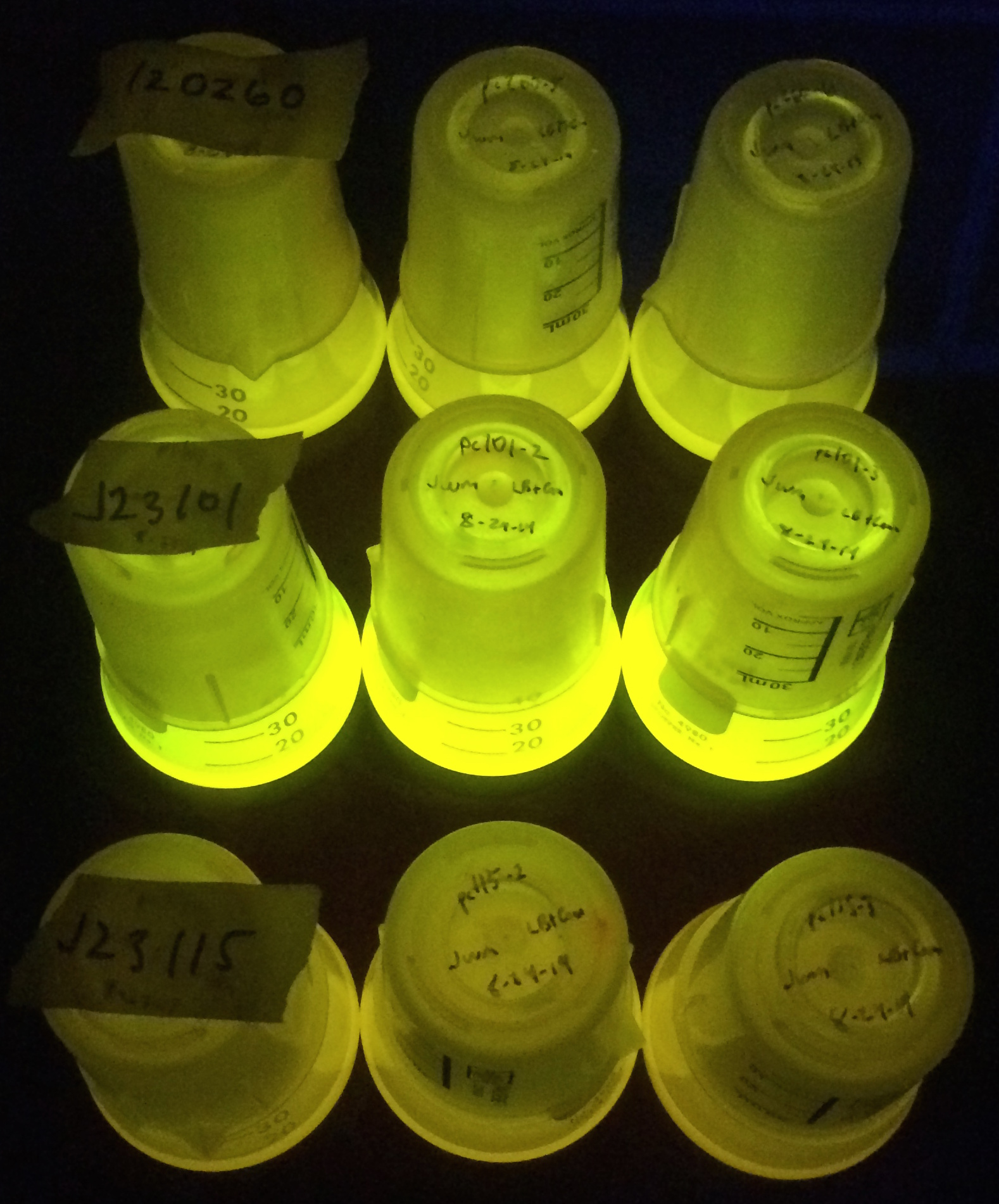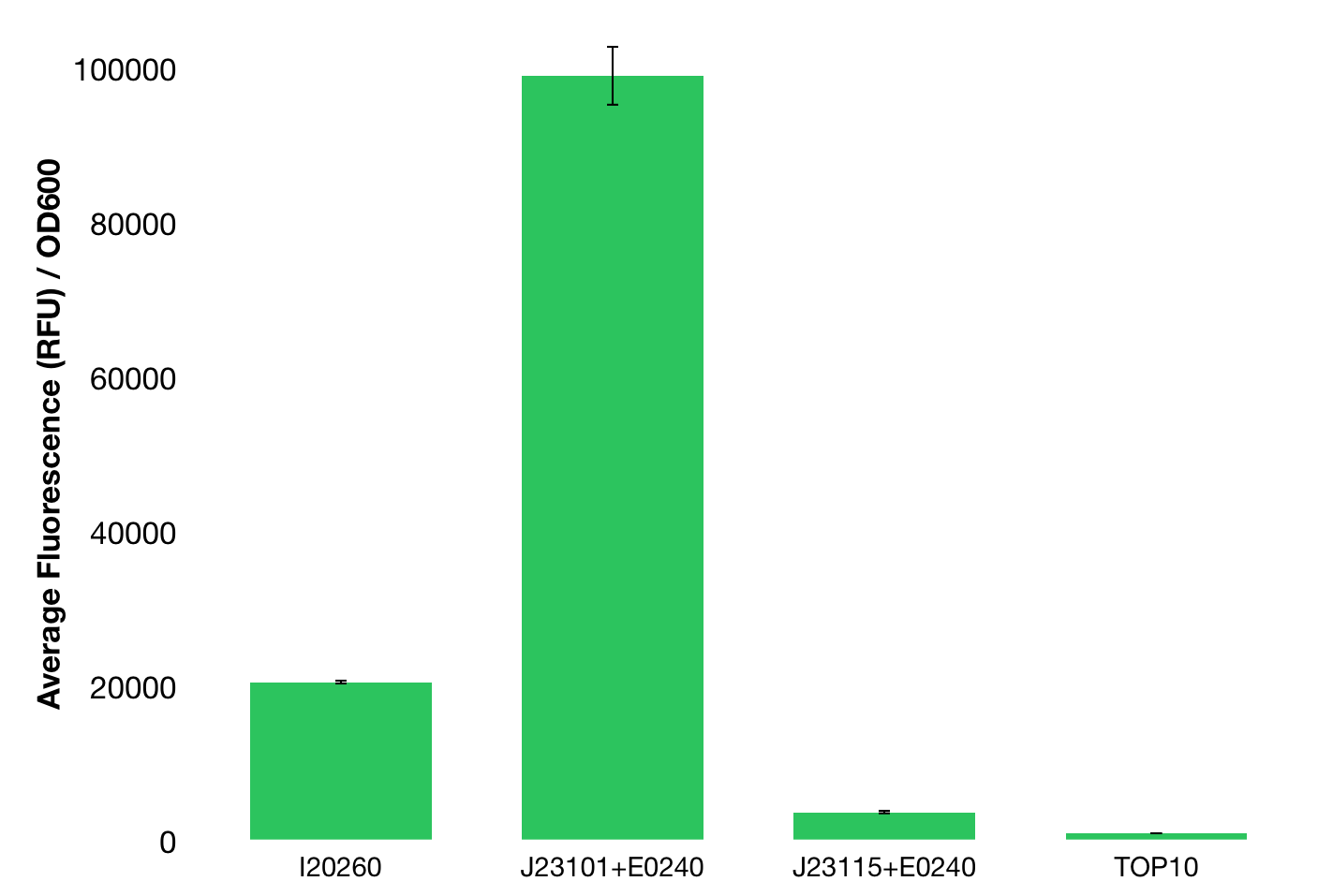Team:Austin Texas/interlab study
From 2014.igem.org
(→Sequencing Data) |
(→Microplate Reader Data and Discussion) |
||
| Line 139: | Line 139: | ||
| - | Data was collected using Infinite 200 PRO Microplate Reader and a 96 well black plate with 80 ul of culture per well. As can be seen in Figure xx, ... Make sure to mention the triplicate cultures, average values, etc... | + | Data was collected using Infinite 200 PRO Microplate Reader and a 96 well black plate with 80 ul of culture per well. '''As can be seen in Figure xx, ... Make sure to mention the triplicate cultures, average values, etc... [edit this template]''' |
| - | Despite the similarities in the devices: all three contained the same coding sequence, two devices had the same backbone and two devices had the same promoter sequence, there were stark differences in the amount of fluorescence produced by the | + | Despite the genetic similarities in the devices: all three contained the same coding sequence, two devices had the same backbone and two devices had the same promoter sequence, there were stark differences in the amount of fluorescence produced by each of the devices. |
| + | |||
| + | While we expected the device with a strong promoter and the highest copy number plasmid to have the highest fluorescence, in our hands this was not the case. Instead, we saw that the plasmid with a slightly lower copy number actually yielded the strongest fluorescence signal. It is possible that the very high copy number plasmid had a negative effect on overall fluorescence - perhaps it became toxic or slowed cell growth. However, it is also possible that we may have swapped cultures or mislabeled an initial conical or culture tube. | ||
| + | '''add anything else, Jordan?''' | ||
| + | |||
| + | |||
Revision as of 00:30, 17 October 2014
| |||||||||||||||||||||||||||||
 "
"


